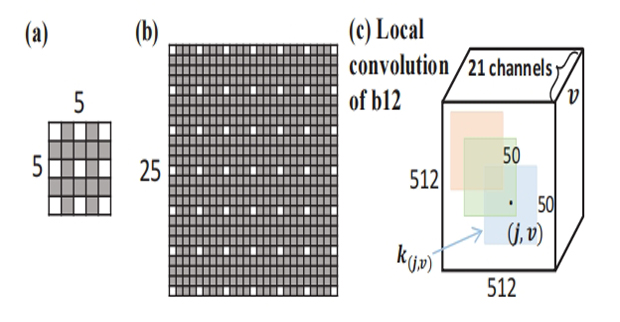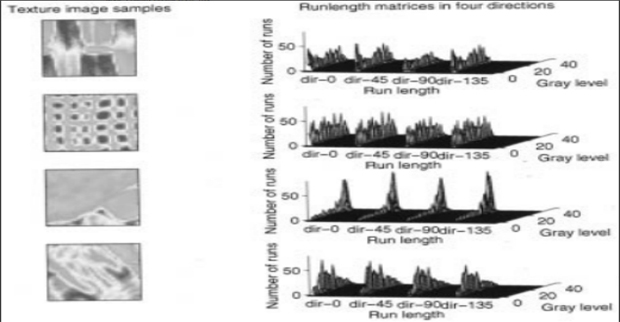-
 ICCVSemantic Image Segmentation via Deep Parsing Network
ICCVSemantic Image Segmentation via Deep Parsing Network时间:2015年丨作者:Ziwei Liu, Xiaoxiao Li, Ping Luo, Chen-Change Loy, Xiaoou Tang
This paper addresses semantic image segmentation by incorporating rich information into Markov Random Field (MRF), including high-order relations and mixture of label contexts. Unlike previous works that optimized MRFs using iterative algorithm, we solve MRF by proposing a Convolutional Neural Network (CNN), namely Deep Parsing Network (DPN), which enables deterministic end-to-end computation in a single forward pass. Specifically, DPN extends a contemporary CNN architecture to model unary terms and additional layers are carefully devised to approximate the mean field algorithm (MF) for pairwise terms. It has several appealing properties. First, different from the recent works that combined CNN and MRF, where many iterations of MF were required for each training image during back-propagation, DPN is able to achieve high performance by approximating one iteration of MF. Second, DPN represents various types of pairwise terms, making many existing works as its special cases. Third, DPN makes MF easier to be parallelized and speeded up in Graphical Processing Unit (GPU). DPN is thoroughly evaluated on the PASCAL VOC 2012 dataset, where a single DPN model yields a new state-of-the-art segmentation accuracy of 77.5%.
了解更多 -
 IEEETexture information in run-length matrices
IEEETexture information in run-length matrices时间:1998年丨作者:Xiaoou Tang
We use a multilevel dominant eigenvector estimation algorithm to develop a new run-length texture feature extraction algorithm that preserves much of the texture information in run-length matrices and significantly improves image classification accuracy over traditional run-length techniques. The advantage of this approach is demonstrated experimentally by the classification of two texture data sets. Comparisons with other methods demonstrate that the run-length matrices contain great discriminatory information and that a good method of extracting such information is of paramount importance to successful classification.
了解更多 -
 IEEEFrom facial parts responses to face detection: A deep learning approach
IEEEFrom facial parts responses to face detection: A deep learning approach时间:2015丨作者:Shuo Yang, Ping Luo, Chen-Change Loy, Xiaoou Tang
In this paper, we propose a novel deep convolutional network (DCN) that achieves outstanding performance on FDDB, PASCAL Face, and AFW. Specifically, our method achieves a high recall rate of 90.99% on the challenging FDDB benchmark, outperforming the state-of-the-art method by a large margin of 2.91%. Importantly, we consider finding faces from a new perspective through scoring facial parts responses by their spatial structure and arrangement. The scoring mechanism is carefully formulated considering challenging cases where faces are only partially visible. This consideration allows our network to detect faces under severe occlusion and unconstrained pose variation, which are the main difficulty and bottleneck of most existing face detection approaches. We show that despite the use of DCN, our network can achieve practical runtime speed.
了解更多 -
 IEEEDeepid-net: Deformable deep convolutional neural networks for object detection
IEEEDeepid-net: Deformable deep convolutional neural networks for object detection时间:2015年丨作者:Wanli Ouyang, Xiaogang Wang, Xingyu Zeng, Shi Qiu, Ping Luo, Yonglong Tian, Hongsheng Li, Shuo Yang, Zhe Wang, Chen-Change Loy, Xiaoou Tang
In this paper, we propose deformable deep convolutional neural networks for generic object detection. This new deep learning object detection diagram has innovations in multiple aspects. In the proposed new deep architecture, a new deformation constrained pooling (def-pooling) layer models the deformation of object parts with geometric constraint and penalty. A new pre-training strategy is proposed to learn feature representations more suitable for the object detection task and with good generalization capability. By changing the net structures, training strategies, adding and removing some key components in the detection pipeline, a set of models with large diversity are obtained, which significantly improves the effectiveness of model averaging. The proposed approach improves the mean averaged precision obtained by RCNN, which is the state-of-the-art, from 31% to 50.3% on the ILSVRC2014 detection dataset. Detailed component-wise analysis is also provided through extensive experimental evaluation, which provide a global view for people to understand the deep learning object detection pipeline.
了解更多 -
 ECCVTwo at once: Enhancing learning and generalization capacities via ibn-net
ECCVTwo at once: Enhancing learning and generalization capacities via ibn-net时间:2018年丨作者:Xingang Pan, Ping Luo, Jianping Shi, Xiaoou Tang
Convolutional neural networks (CNNs) have achieved great successes in many computer vision problems. Unlike existing works that designed CNN architectures to improve performance on a single task of a single domain and not generalizable, we present IBN-Net, a novel convolutional architecture, which remarkably enhances a CNN’s modeling ability on one domain (eg Cityscapes) as well as its generalization capacity on another domain (eg GTA5) without finetuning. IBN-Net carefully integrates Instance Normalization (IN) and Batch Normalization (BN) as building blocks, and can be wrapped into many advanced deep networks to improve their performances. This work has three key contributions.(1) By delving into IN and BN, we disclose that IN learns features that are invariant to appearance changes, such as colors, styles, and virtuality/reality, while BN is essential for preserving content related information.(2) IBN-Net can be applied to many advanced deep architectures, such as DenseNet, ResNet, ResNeXt, and SENet, and consistently improve their performance without increasing computational cost.(3) When applying the trained networks to new domains, eg from GTA5 to Cityscapes, IBN-Net achieves comparable improvements as domain adaptation methods, even without using data from the target domain. With IBN-Net, we won the 1st place on the WAD 2018 Challenge Drivable Area track, with an mIoU of 86.18%.
了解更多
